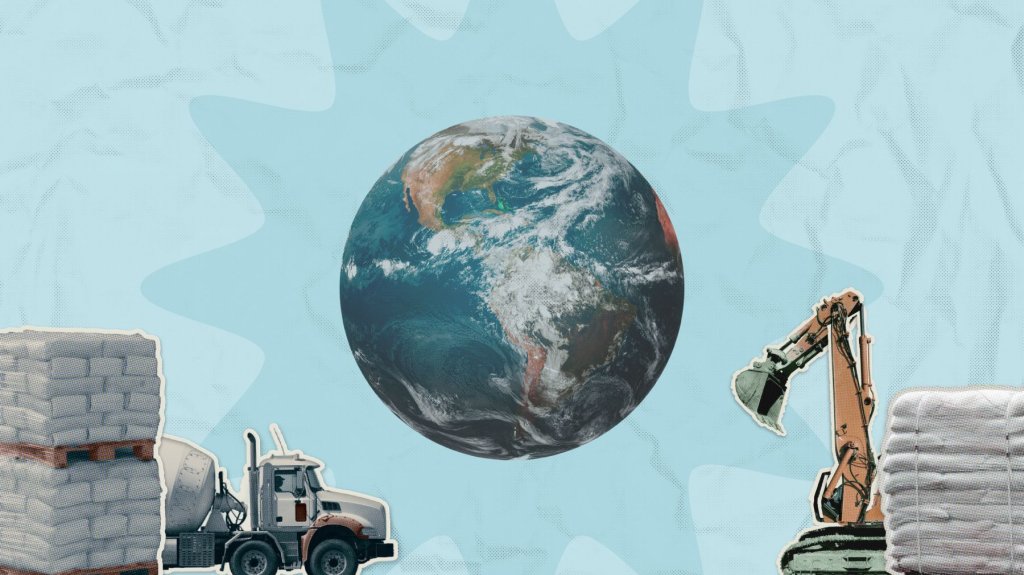Using sustainable building materials is one of the most straightforward ways to reduce the negative impact a construction project has on the environment.
Learn what’s considered a sustainable material and discover ways to incorporate this green construction practice at your business.
What is a sustainable building material?
Sustainable building materials have a lower environmental impact than other materials used in construction. They are typically made of renewable resources, recycled, or produced using responsible manufacturing methods.
While it's not always feasible to use sustainable materials for the entirety of a construction project, substituting them for other, less eco-friendly options whenever possible can make a significant difference in reducing the negative side effects of new construction like pollution, excess waste, and resource depletion.
Some sustainable materials have been used in construction for thousands of years, while others are new or experimental.
Recommended Read
What is LEED Certification in Construction?
Learn about the LEED certification program and how it contributes to environmentally-conscious construction.
8 sustainable building materials
The most common examples of sustainable construction materials are:
Stone
Bamboo
Cork
Laminated timber
Reclaimed and recycled material
Alternative concrete
3D printed material
Organic materials
Stone
Stone is durable, easy to maintain, and completely natural. Using stone for walls, paving, and other structures produces less waste than when building with other materials.
Bamboo
Bamboo is a highly renewable resource that grows quickly and can thrive in many different parts of the world. It’s a strong, yet flexible wood that can be used for structural and aesthetic purposes.
Cork
Cork is a renewable and recyclable option for insulation. It’s a natural material made from oak bark, and it can be recycled.
Laminated timber
Laminated timber, also known as mass timber, is an engineered building material made of many different layers of wood that are joined together with glue or other methods. Strong and durable, it is most often used for creating load-bearing elements such as walls, floors, beams, and columns.
Reclaimed and recycled materials
Many construction materials can be reclaimed and recycled from previous structures. Repurposing them prevents waste and reduces emissions that would be made by the manufacturing of new materials.
Steel, lumber, plastic, glass, and other materials can all be used in this manner. Any materials that are reclaimed or recycled must be removed, restored, and repurposed using proper methods to ensure integrity.
Alternative concrete
Concrete is essential to modern construction, but unfortunately the traditional methods for producing cement, one of the main components of concrete, is a major source of pollution around the world.
Luckily, there are some new alternatives, including low-carbon concrete, which replaces part of the cement with greener alternatives like different mineral compounds. There is also hempcrete, which is made of materials from the hemp plant mixed with lime.
3D printed material
3D printing is considered a sustainable manufacturing method because it produces minimal waste. Currently, the construction industry is exploring using 3D printing methods to create building materials out of biodegradable, renewable resources and environmentally-friendly resources like wood and calcium.
Organic material
The construction industry is also exploring creating building materials out of some potentially surprising organic substances. Some materials like cob—a mixture of clay, straw, and water—are traditional materials that are being used in new and innovative ways.
Others like mycelium brick, made out of the different parts of a common fungus, are more experimental.
With any new sustainable construction material, testing is needed and regulations must be put in place before they can be safely used on a wider basis.
How to incorporate sustainable materials into your construction process
It’s important to understand how to work with sustainable construction materials before you begin using them on your projects. In some cases, you won’t be able to substitute sustainable materials for traditional ones without causing safety or durability issues, which should be your main concern.
Consider taking a sustainable construction materials certification course. Many are offered online and can be completed from any location. Some options include:
Sustainable Building Construction - University of Massachusetts
Sustainable Building Materials - The New School
Sustainable Construction Technology - St. Petersburg College
Once you have the knowledge you need to start using sustainable materials safely, you can begin incorporating them into your projects. Implement a step within your project planning stage to discuss the available options with the project owner and determine where sustainable materials can be used in a way that is both aesthetically pleasing and structurally sound.
Use Raken for real-time materials tracking
Raken’s easy-to-use construction materials tracking app can help you better manage the way you utilize sustainable materials, protecting your investments in the environment.
Closely monitor material use in the field and share updates with the office in real-time. Measure estimates against actual numbers to prevent delays and make sure your crews always have what they need to finish the job.
Combine our materials tracking with our other tools for monitoring time, labor, and safety on the jobsite. Get clear visibility of performance, identify issues early, and gain automated insights for more informed decision making.
Track materials (and more) with Raken
See how our easy app tracks your most important resources, including materials.
